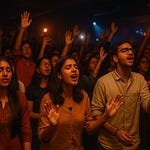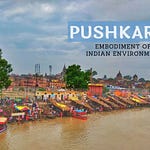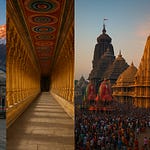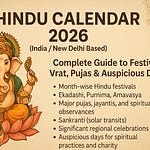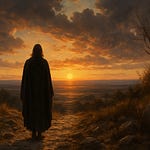Location: Hosa Kannambadi, near Krishna Raja Sagara (KRS) Dam, Mandya district, Karnataka
Deity: Lord Venugopala (a form of Krishna with a flute)
Architecture: Hoysala
Original Construction: 12th Century CE
Reconstruction & Restoration: Completed in 2000 by the Khoday Foundation
🛕
Nestled on the tranquil banks of the Krishna Raja Sagara reservoir lies the awe-inspiring Venugopalaswamy Temple, an architectural and spiritual marvel. Originally built during the reign of the Hoysalas in the 12th century, the temple has lived through centuries of devotion, displacement, and resurrection—ultimately becoming a symbol of India’s rich cultural and religious legacy.
🏛️ Origin & Historical Significance
The temple was originally located in the village of Kannambadi, which was one of the many culturally rich villages submerged during the construction of the KRS Dam by Sir M. Visvesvaraya in the early 1900s. The temple, a stunning example of Hoysala architecture, was submerged and remained underwater for most of the 20th century.
It re-emerged occasionally during drought years, piquing the curiosity of tourists and devotees alike. Recognizing its historical value, the Khoday Foundation undertook a massive effort in the 1990s to relocate and reconstruct the temple stone by stone, 2 kilometers from its original location, at Hosa Kannambadi.
The reconstruction, completed by 2000, involved cataloging over 2000 stones, each numbered, transported, and reassembled to its original grandeur—preserving its legacy for future generations.
🧘 Religious Significance & Essence
The presiding deity, Lord Venugopala, is one of the divine forms of Lord Krishna, particularly known for playing the flute (venu) and spreading love, harmony, and dharma. The temple embodies Vaishnavite traditions and draws thousands of Krishna devotees throughout the year.
It is believed that visiting this temple and offering prayers to Lord Venugopala grants peace of mind, protection from adversities, and harmony in family life.
🙏 Puja, Rituals & Aarti Timings
Though not a full-time functional temple with daily rituals like larger temples in Mathura or Udupi, several pujas and special ceremonies are conducted here regularly, especially on Krishna-related festivals.
Daily Timings:
Morning Hours: 6:00 AM – 11:30 AM
Evening Hours: 4:30 PM – 8:00 PM
Aarti & Rituals:
Mangala Aarti (Morning) – 6:30 AM
Madhyanha Pooja (Noon) – 12:00 PM
Deepa Aarti (Evening) – 6:30 PM
Special Pujas:
Krishna Janmashtami – Celebrated with grandeur including bhajans, jhanki (tableaus), and night-time abhishek
Vaikuntha Ekadashi, Gokulashtami, and Radhashtami also see special events
Annadanam (Free Meals) is occasionally served during auspicious days
🏗️ Architectural Grandeur
The temple showcases quintessential Hoysala architectural elements:
Star-shaped sanctum (garbhagriha)
Intricately carved pillars and ceilings with floral and mythological motifs
A detailed navaranga (mandapam) and pradakshina patha
Elaborate sculptures of Krishna leelas (playful acts of Krishna)
The painstaking reconstruction preserved even the original chisel marks, a testament to both ancient craftsmanship and modern devotion.
🗺️ Travel Information
How to Reach:
Nearest City: Mysuru (30 km away)
By Road: Located near Hosa Kannambadi, accessible by taxi or local bus from Mysuru
By Rail: Mysuru Railway Station is the nearest major railhead
By Air: Mysuru Airport or Bengaluru International Airport (170 km)
Best Time to Visit:
October to February (pleasant climate and festival season)
Nearby Attractions:
Krishna Raja Sagara (KRS) Dam & Brindavan Gardens
Ranganathittu Bird Sanctuary
Mysore Palace
Chamundi Hills
📜 Legends & Local Beliefs
While there's no formal mythological tale directly tied to this specific temple like Udupi or Mathura, locals believe that this temple was commissioned by a Hoysala ruler as part of a vow taken during a period of regional unrest. It was built to invoke the blessings of Lord Krishna for the prosperity and protection of the land.
Some villagers recount oral tales of miracles during drought years when the deity would be visible again, and offerings would be made even in shallow waters.
🌸 Current Status & Events
Today, the temple is managed by a private trust (Khoday Foundation), and though not a full-fledged active temple, it is open to the public for visits, meditation, and private pujas. Cultural and spiritual programs are occasionally organized.
The temple also acts as a peaceful heritage tourism site, blending spiritual sanctity with artistic inspiration.
💡 Key Takeaways
Built: 12th Century by the Hoysalas
Reconstructed: In 2000 by the Khoday Foundation
Deity: Lord Venugopala (a form of Lord Krishna)
Architecture: Hoysala style, known for intricate carvings and star-shaped sanctums
Timings: Open daily from 6:00 AM to 11:30 AM and 4:30 PM to 8:00 PM
Festivals Celebrated: Janmashtami, Ekadashi, Gokulashtami, and other Krishna-related festivals
Location: Hosa Kannambadi village, near the KRS Dam in Karnataka
Access: Approximately 30 kilometers from Mysore and 170 kilometers from Bengaluru
🧭 Final Thoughts
The story of the Venugopalaswamy Temple is one of survival, faith, and restoration. From the depths of a reservoir to the hearts of devotees, it represents not just a spiritual landmark, but a reminder that culture, when preserved, continues to inspire across generations.
Whether you're a spiritual seeker, a history buff, or an architecture lover, a visit to this resurrected temple is a journey into time, devotion, and beauty.




